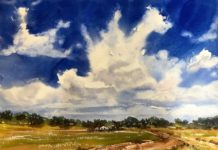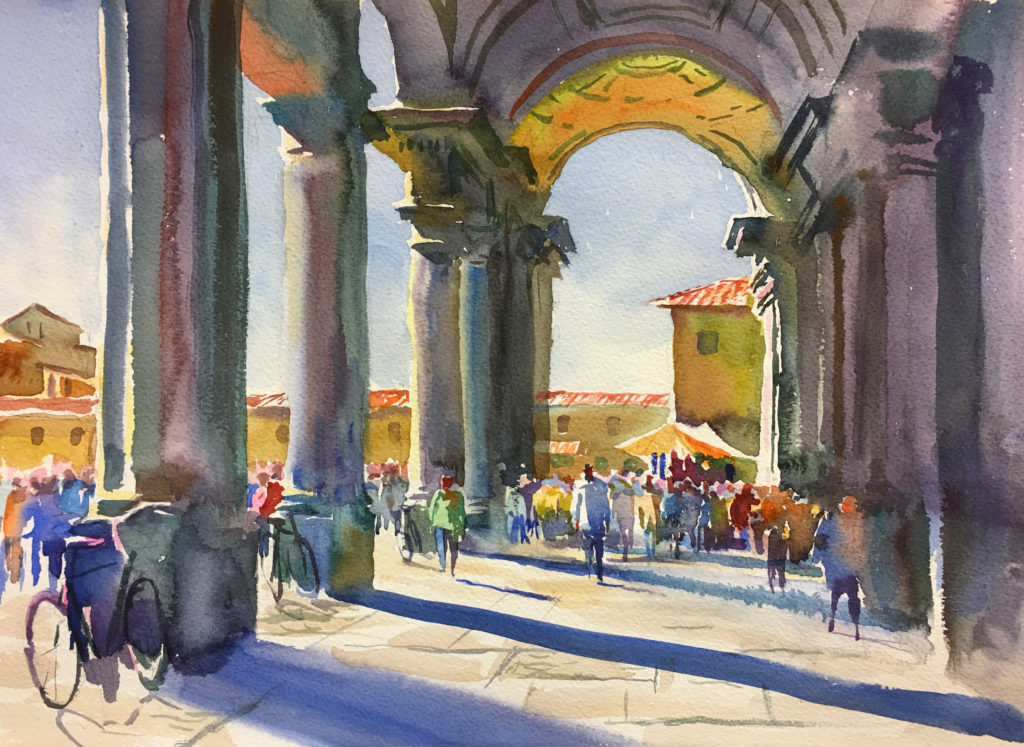
“I do not do studies for paintings — because I have found the study is often better than the final painting because I expend my energy and interest in creating the study,” says Wyatt Waters. “To keep me in touch with the values and the liquid quality of watercolor, I often do small black-and-white sketches using ivory black. I make a rectangular opening by holding up the thumb and forefinger of both hands and identifying what I want to include in the painting. I made my own sketch box out of a Sucrets container that has one surface for holding the paint and the other for mixing, and I have a cellulose sponge handy.
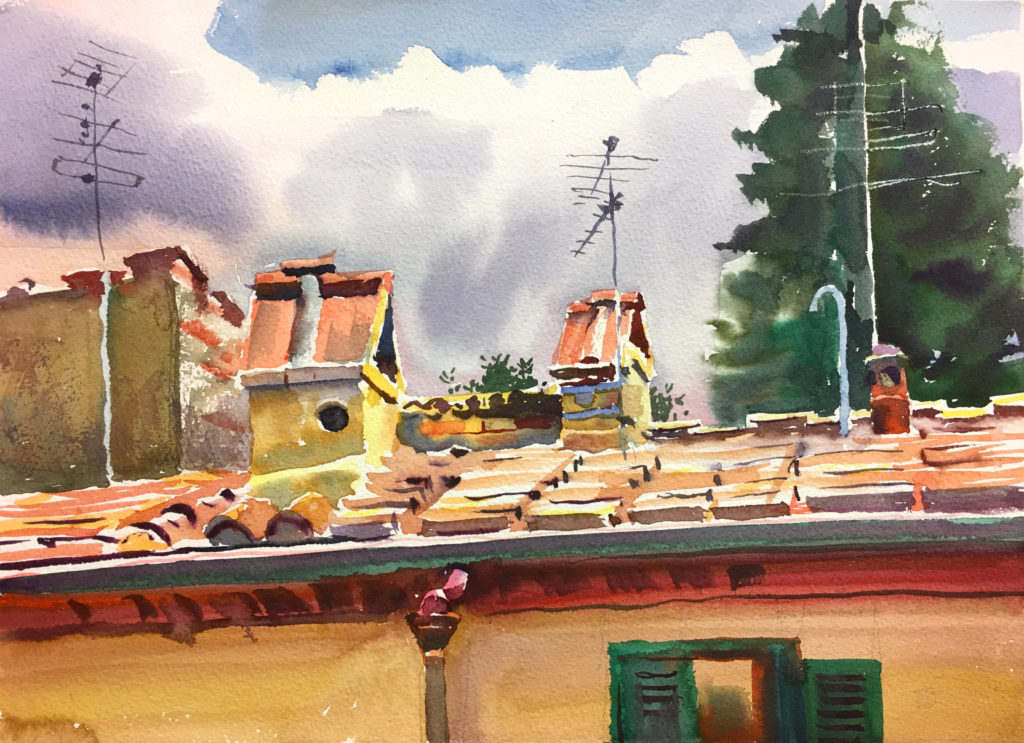
“When painting on larger sheets of paper, I use a DaVinci No. 8 synthetic brush with longer filament hairs almost exclusively. The bigger the brush, the bigger the shapes, and big shapes are the important shapes. I don’t want to think about going back and forth between brushes. I paint the dark and mid-tone shapes first, clean my palette, then paint the lightest values. The darks help the viewer delineate the subject, and the fluid connections help connect one shape to another, and that helps people figure out things better.” That large brush and fluid paint lend a brightness and vitality to Waters’ paintings. His use of brilliant colors is carefully balanced in terms of the warmth and coolness of the paints and effectively communicates a sense of space, the weight and scale of the objects, and the textural surfaces of those objects.
Plein Air Painting Demonstration
All of Waters’ paintings are done on location, using a custom-made setup that holds 11 x 15 or 15 x 22-inch sheets of watercolor paper.
“My preference is to paint in the morning or afternoon, when the light is most dramatic,” says Waters, “I get excited when I am on the edge of a disaster and have to rescue it. That’s one reason I love painting outdoors so much. I have to work fast, get involved with subject, and lend an authenticity that holds out the promise of being art. I spend three or four hours on each painting and never know until the end whether it’s successful or not.”
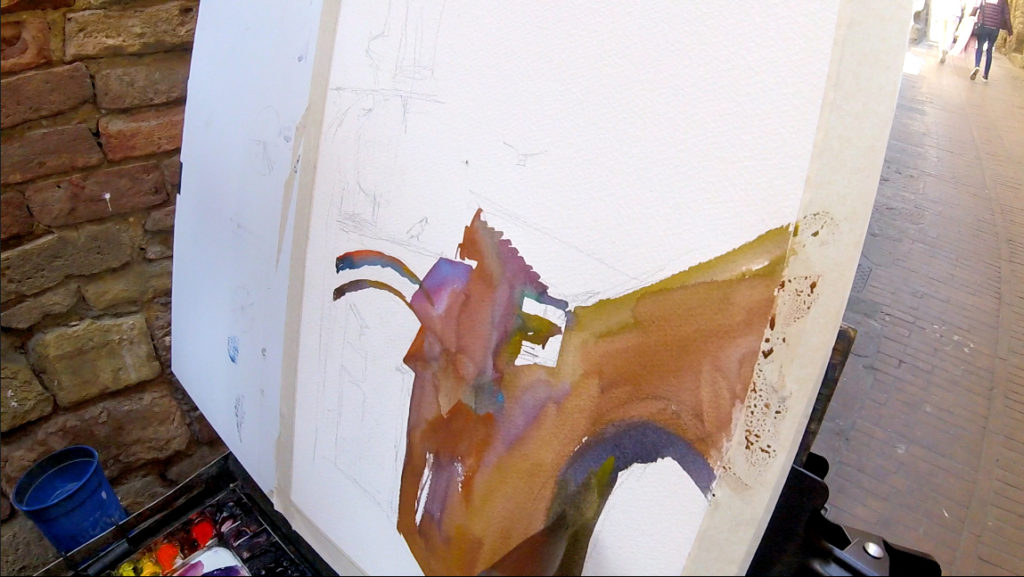
Step 1: Working on location with a squirrel mop brush, Wyatt Waters paints the Italian scene with fluid mixtures of watercolors that blend and flow down the watercolor paper.
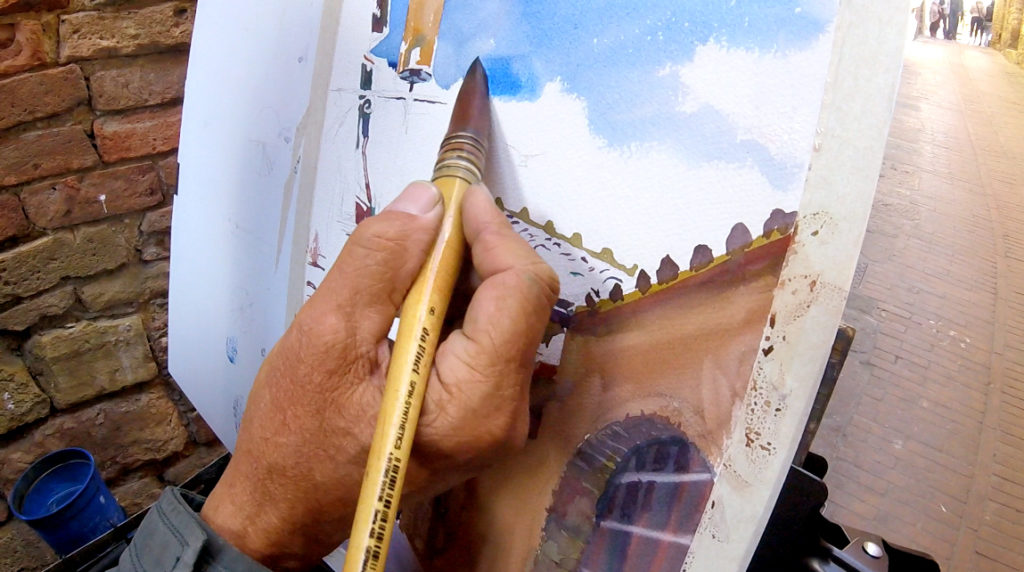
Step 2: Using the same brush, the artist uses a fluid mixture of blue to block in the sky.

Step 3: Working with the pointed tip of the same brush, Waters adds dark accents to the buildings, figures under the arch, and gestured indications of birds.
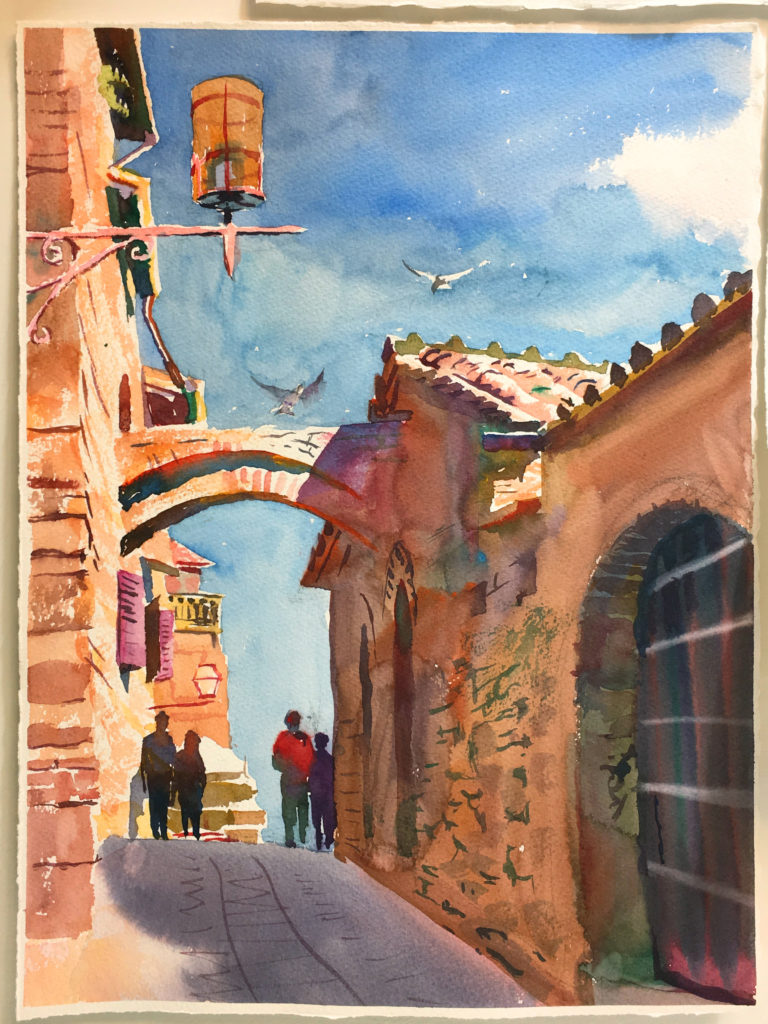
For more inspiring stories like this one, sign up for our free weekly e-newsletter.
 Wyatt Waters was featured in the August-September 2017 issue of PleinAir Magazine. Widely known for his watercolors of Southern culture, Waters creates paintings of the roadside South. Waters’ works have been featured in Art & Antiques, American Artist, Watercolor, Mississippi Magazine and Delta Magazine. His paintings are held in private and corporate collections. He’s had solo shows at the MS Museum of Art, The Lauren Rogers Museum of Art, The Meridian Museum of Art and The Jackson Municipal Gallery. He owns and operates the Wyatt Waters Gallery in Clinton, MS.
Wyatt Waters was featured in the August-September 2017 issue of PleinAir Magazine. Widely known for his watercolors of Southern culture, Waters creates paintings of the roadside South. Waters’ works have been featured in Art & Antiques, American Artist, Watercolor, Mississippi Magazine and Delta Magazine. His paintings are held in private and corporate collections. He’s had solo shows at the MS Museum of Art, The Lauren Rogers Museum of Art, The Meridian Museum of Art and The Jackson Municipal Gallery. He owns and operates the Wyatt Waters Gallery in Clinton, MS.
He has collaborated with Robert St. John on A Southern Palate, Southern Seasons, and An Italian Palate. He received the MS Institute of Arts & Letters Award for An Oxford Sketchbook and the MS Library Association Special Award for Art for his collaboration with Robert St. John, A Southern Palate. He lives with his dog, James in Clinton, MS.

